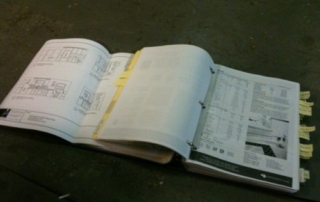Myers Constructs Q&A: Planning the Perfect Custom Bathroom
This week, Tamara offers her thoughts on planning a bathroom renovation that fits the very personalized needs of every home. Q: What are the most important considerations for homeowners planning[...]
Lighting: It’s All About the Plan
Lighting: It's All About the Plan As is the case with many aspects of our work, if we do our job well when planning the lighting scheme for a project,[...]
Different Customers, Different Outcomes: The Value of a Streamlined Process
We recently received a phone call from a returning prospective client who had contacted us several months ago about doing a large kitchen/home remodel for her. At that time, we[...]
Wants vs. Needs: A Look at Prioritizing Home Renovations
Our clients, Robin and James,* have lived in their large, 90-year-old stone single home for 20+ years. They are now in their 40s, and have raised two active boys. James[...]
The Importance of Having a Plan
I’ve been speaking with some landscapers about creating a plan for our yard’s landscaping. I’m pretty sure my reaction to the process is a lot like most homeowners thinking about[...]
A Helpline for Homebuyers
We often get phone calls from folks who are have recently purchased an older home and want to make some renovations or upgrades to it. Typical homes in our area[...]
Why Some Porches Work and Others Don’t
For porches that work, read this.









